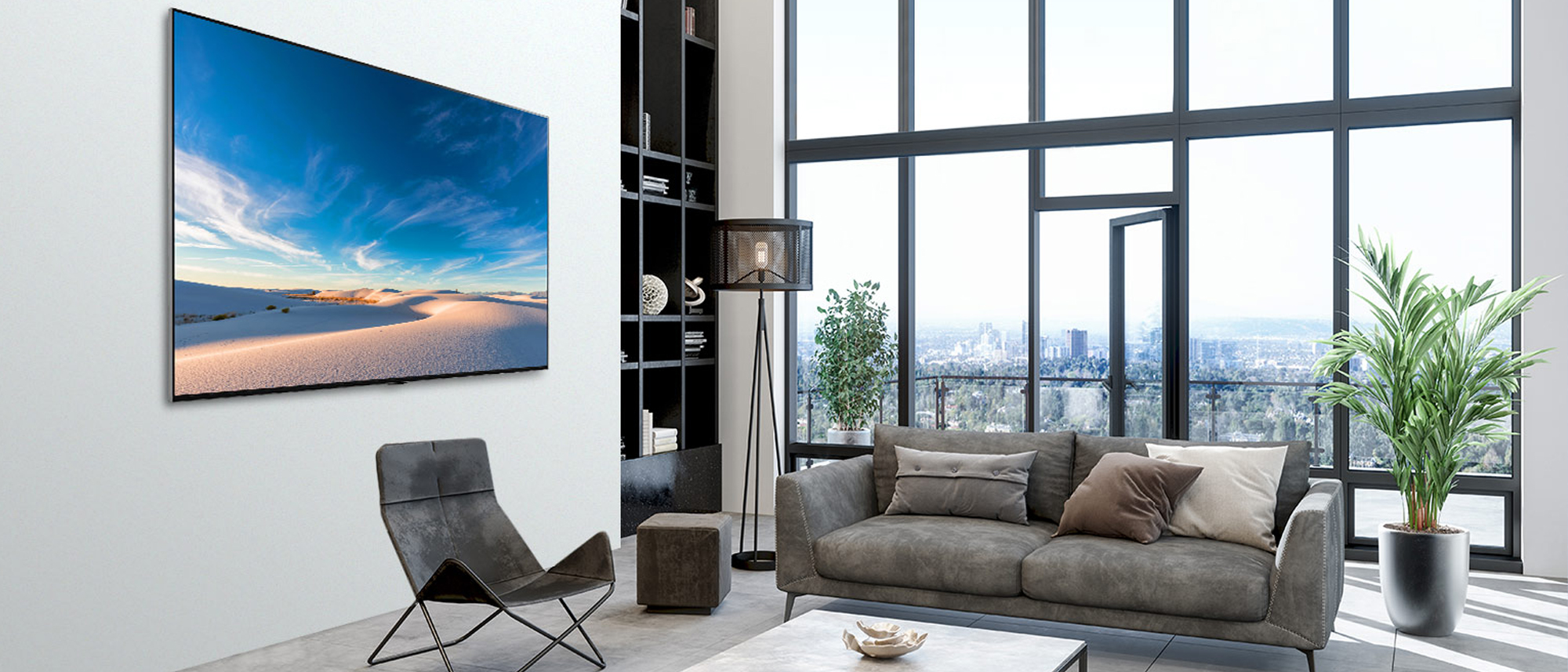Tom's Guide Verdict
The LG QNED 99 sports a lot of features and enhancement technologies, but is held back by a couple of technical issues—and the present limitations of 8K itself.
Pros
- +
Eye-popping 8K video quality
- +
Excellent brightness, color reproduction
- +
Good sound quality, with lots of additional options available
Cons
- -
Requires significant viewing space for full 8K effect
- -
Inconsistent upscaling
- -
Sluggish controls
- -
Limited 8K content
Why you can trust Tom's Guide
Price: $3,499
Model number: 75QNED99UPA
Screen size: 75 inches
Resolution: 7,680 x 4,320
HDR: HDR10, HLG, Dolby Vision
Refresh rate: 120 Hz
Ports: 4 HDMI 2.1, 3 USB
Audio: 60W 4.2-channel speakers
Smart TV software: webOS
Size: 65.6 x 37.7 x 1.1 inches [w/o stand]
Weight: 82 lbs. [w/o stand]
The LG QNED MiniLED 99 Series 8K TV is one of a selection of new models showing that 8K is now on the threshold of affordability for a greater number of people. LG’s new entry in that contest is the QNED 99, which purports to fuse a number of existing display technologies and its own innovations into one four-times-larger-than-4K-resolution set positioned for the Next Big Display Thing. It's an easy addition to our best 8K TVs list, but does it present a compelling case for buyers?
On the surface level, yes. This is a reasonable way for all you slavering early adopters to get 8K into your home (provided you have a spacious place to put the set) and get some good features as part of the deal. But as this review is being published in early fall of 2021, a lot of roadblocks to widespread 8K adoption remain, foremost among them high prices, low Internet bandwidth for streaming the crazy number of pixels required, and such a dearth of content that there’s almost nothing to stream anyway. LG can’t solve these problems with the QNED 99—only time and wide-scale adoption can do that—and nods toward some new ones while introducing a couple of its own along the way. Yes, the QNED 99 gets the job done, but right now, it’s not entirely clear how much that job needs to be done at all.
LG QNED MiniLED 99 Series 8K TV review: Price and availability
For our review, we assessed the 75-inch version of the LG QNED 99, the $3,499 75QNED99UPA. Because the other two available models, the 65-inch 65QNED99UPA and the 86-inch 86QNED99UPA, share the same core features and underlying technologies, we expect those sets to be comparable in performance—though the 75-inch one is likely to be the best choice for most shoppers, for reasons explained in the Performance section.
- 65-inch (model 65QNED99UPA): $2,499.99
- 75-inch (model 75QNED99UPA): $3,499.99
- 86-inch (model 86QNED99UPA): $5,299.99
LG QNED MiniLED 99 Series 8K TV review: Design
First things first: The 75QNED99UPA is big. Measuring nearly 66 inches wide and 38 inches tall and weighing 82 pounds, you’ll need at least two strong people to set it up and position it—and having a third on hand might not be a bad idea, especially if you’re planning use one of the best TV mounts to wall-mount it. (The shipping weight is a hefty 106 pounds, so even moving the box may be a challenge.) Even just adjusting the TV once it’s set up can be a trial; figure out where you want it, put it there, and leave it.
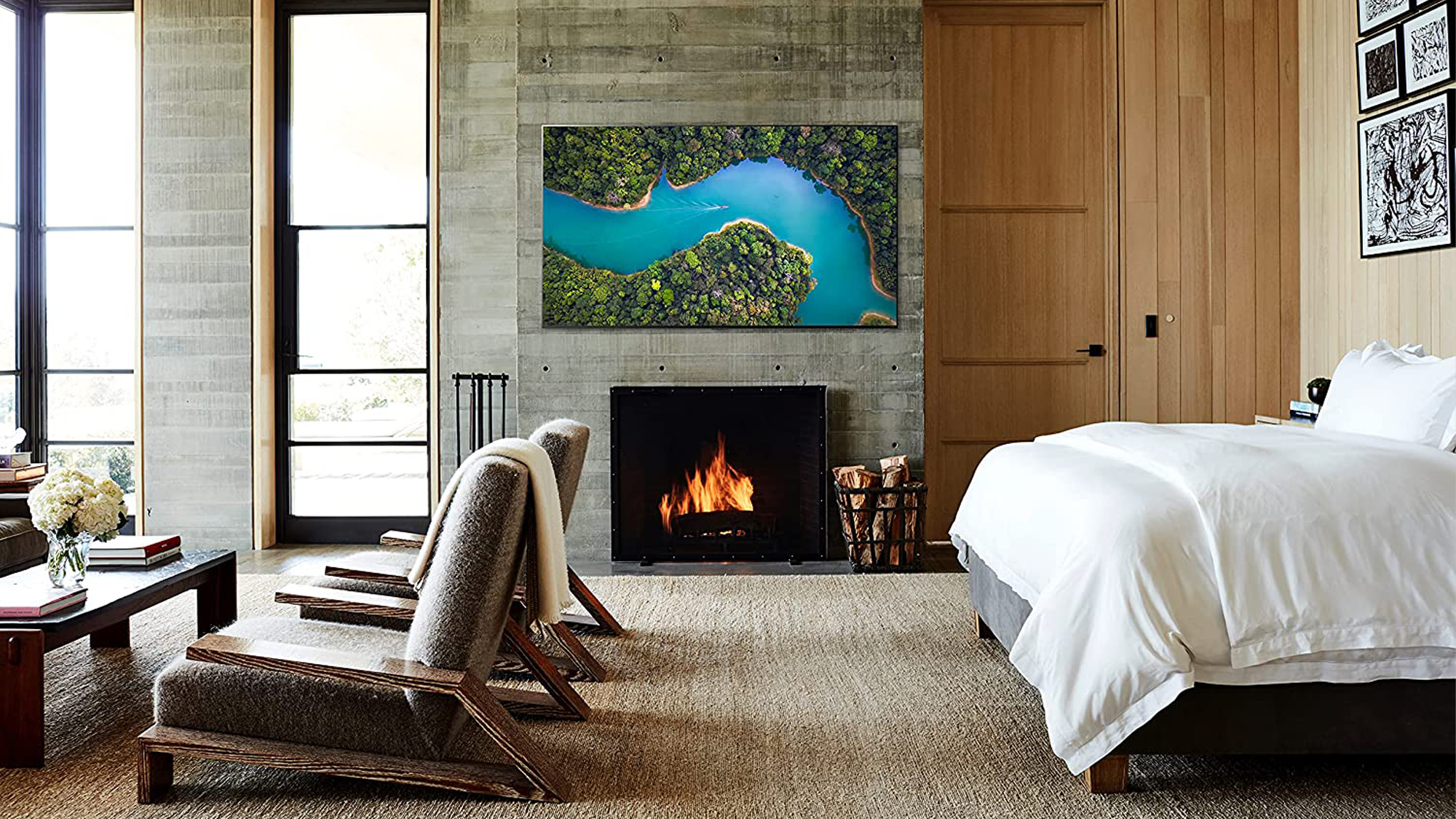
In most other ways, the set is subdued in the design department: good looking, but in no way ostentatious. From the front, not much is visible beyond the sprawling screen except the thin, silver-colored rim and the quarter-inch bezel on the left, right, and top; the third-inch bezel on the bottom sports the red standby light in the middle, but not a lot else.
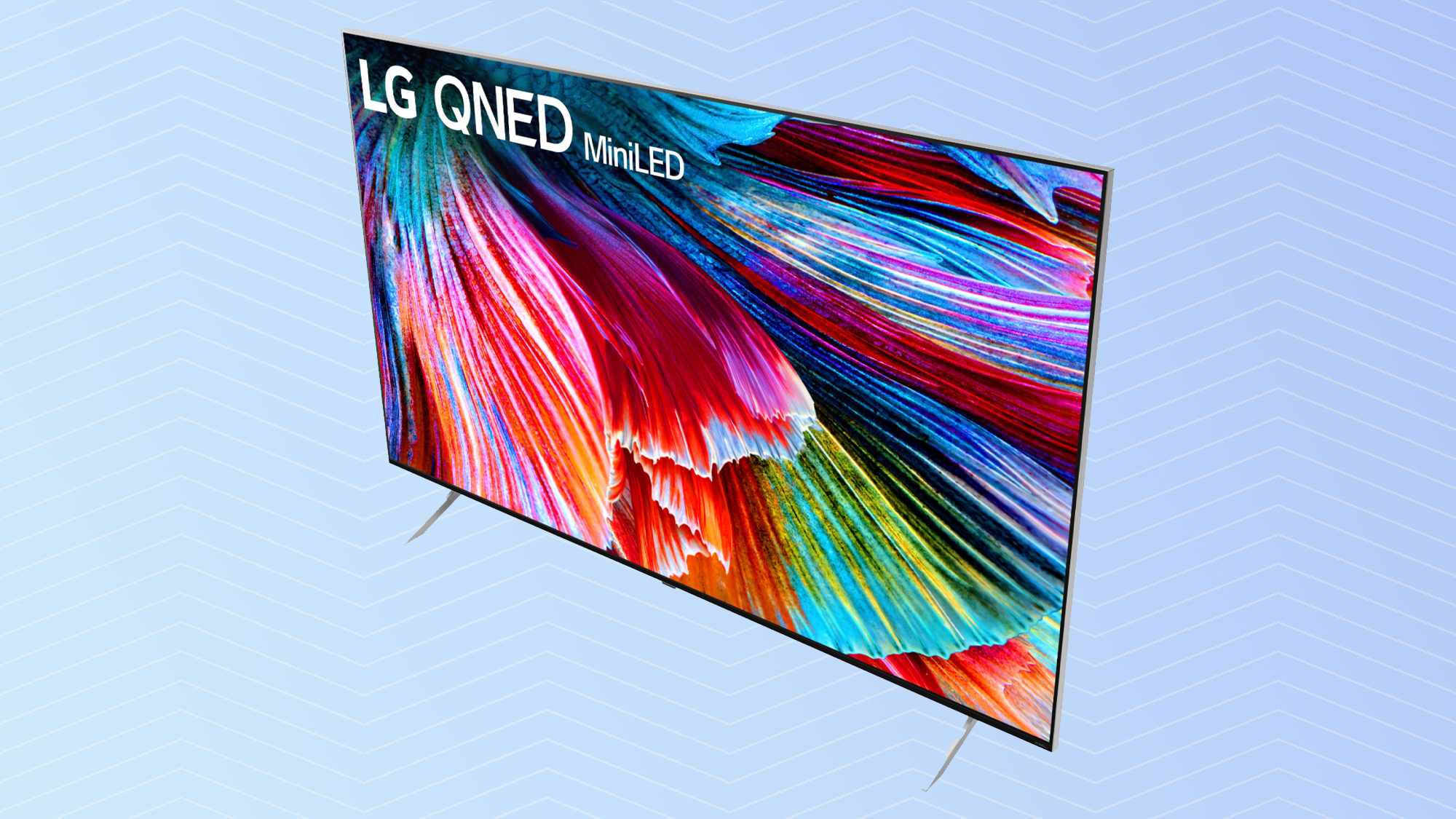


The back is largely a featureless plain of dark metal, too, with a few alcoves cut for the ports and two in the upper corners for a flush-mounting solution (to be released later this year), the holes for installing a 400x400-millimeter VESA mounting bracket, and not much else. Although the 1.1-inch-thick TV is designed to be wall mounted, it includes a wedge-shaped, brushed-metal stand if you’d prefer to place it on top of something else. The attractive stand does add 13 inches to the depth, though, so check that you have sufficient space for it.
LG QNED MiniLED 99 Series 8K TV review: Ports
The power connector is on the right side of the TV and the remaining rear-panel ports, all downward-aiming, are on the left. These comprise (left to right) IR Blaster, RS-232C, coaxial cable, optical audio out, Ethernet, two HDMI, and two USB ports. Two additional HDMI ports and one more USB port face out the left side, making it a lot easier to quickly connect or disconnect frequently moved devices.
Get instant access to breaking news, the hottest reviews, great deals and helpful tips.
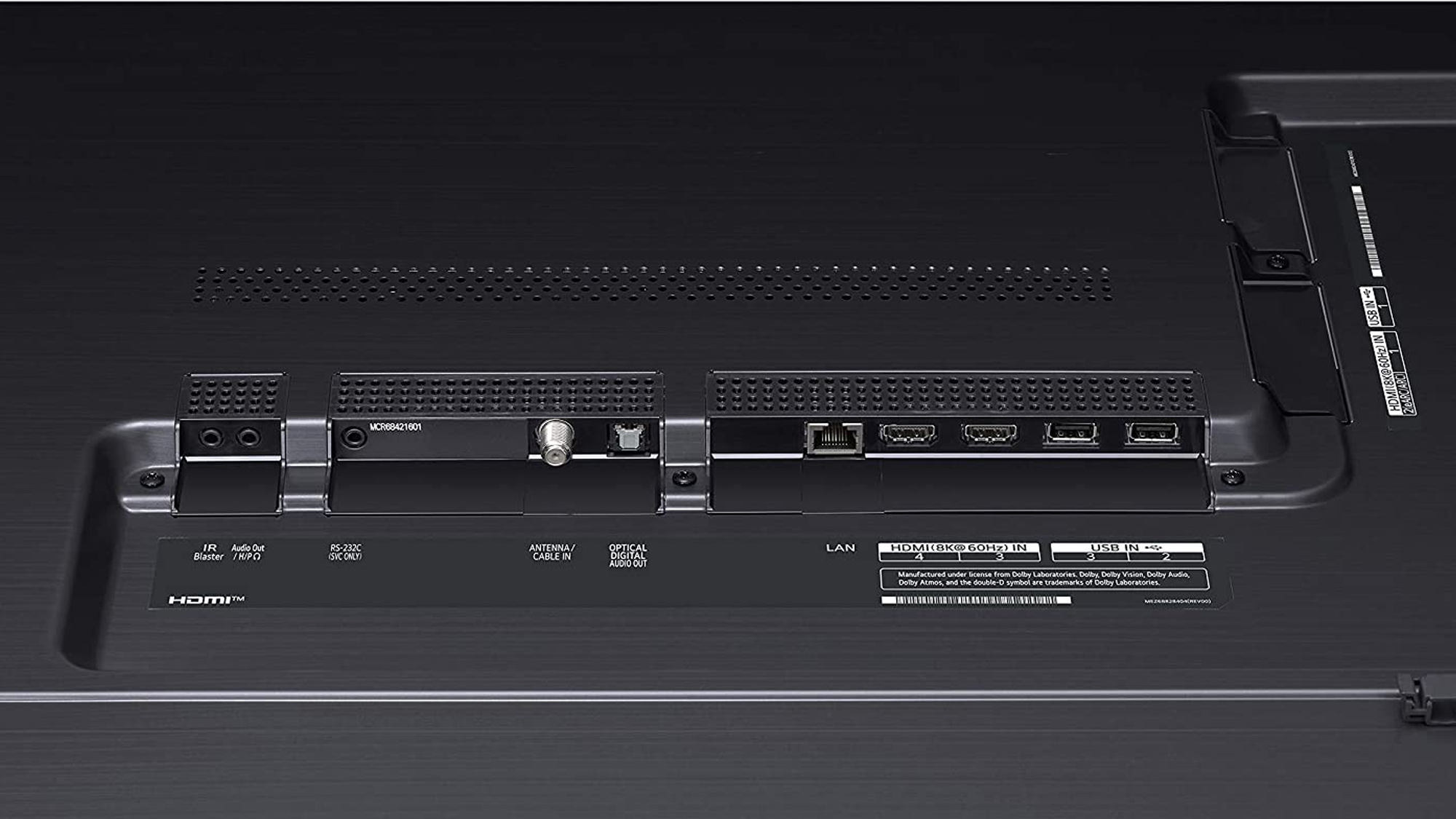

All four HDMI ports support the newest HDMI 2.1 standard, which allows for next-generation technologies like 120 Hz refresh rates at 4K resolution; Auto Low Latency Mode (ALLM), for automatically switching over to gaming settings when you activate your console. The only advanced HDMI 2.1 feature that's missing is Variable Refresh Rate (VRR). We greatly appreciate LG’s using HDMI 2.1 on all its ports, and hope that other TV makers follow suit in short order.
LG QNED MiniLED 99 Series 8K TV review: Test Results
To get a better idea of how the QNED MiniLED 99 Series compares with comparable TVs, we fired up our usual testing regimen using Portrait Displays’s Calman Ultimate calibration software, X-Rite i1 Pro and SpectraCal C6 colorimeters, and two pattern generators: the AccuPel DVG-5000 for SDR and the SpectraCal VideoForge Pro for HDR.
The QNED 99 is one of the brighter TVs we’ve tested, registering 442 nits in its SDR Cinema mode and 557 nits in its brightest mode (Vivid), supporting LG’s claim that this is the brightest TV the company has ever released. It doesn’t quite match the maximum SDR brightness of 621 nits we saw from the TCL 6-Series 8K (65R648), or come close to the Samsung QN90A Neo QLED’s 1,814 nits (though we’ve never seen anything that does); and these results are largely mirrored in the HDR modes. But the QNED 99, like the other two TVs, continues to make an impressive case for the brightness potential of Mini LEDs.

We saw superior color reproduction from the QNED 99, too. Its 2.06 rating for Delta-E, which measures the difference between the color at the source and the color displayed on the screen, was the best among the three sets, with the TCL registering 2.12 and the Samsung 2.57.
With SDR content, the LG model also covered a slightly greater percentage of the Rec. 709 color gamut (99.95%) than the other two sets in Standard mode, with the TCL’s 99.86% and the Samsung’s 99.79%. It was, however, weaker with HDR, covering less of the Rec. 2020 and UHDA-P3 color gamuts than either of the other two sets.
LG QNED MiniLED 99 Series 8K TV review: Performance
We discovered from our previous mainstream 8K set, the TCL Roku TV 6-Series 8K, that a 65-inch screen is wholly inadequate to conveying the full capabilities of 8K, due to the pixel density that ends up as not registering much more visibly sharp than 4K, especially if you’re not up close. We’re happy to report that this LG makes a far better case for the new display resolution—provided you’re able to watch it from far enough away.
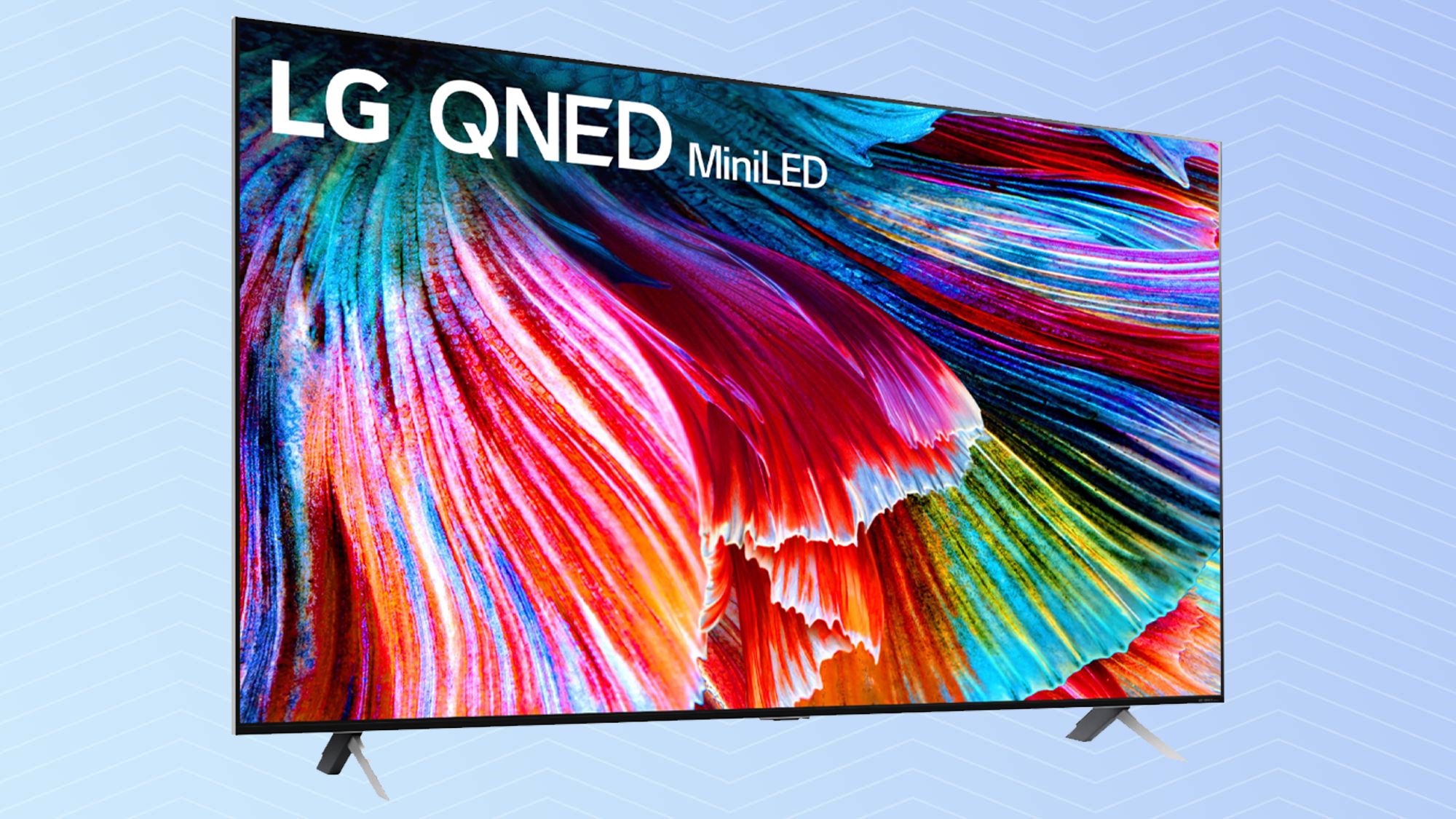
From a viewing distance of about 12 feet, the 75QNED99UPA’s picture was a revelation: razor-edged crisp, even down to the individual hairs on animals’ faces or lights in the New York City skyline. No matter what I watched (a subject we’ll return to in a moment), the result was jaw-dropping, and about as transformative as the first time I saw an HD or 4K TV in full-resolution action.
There are two unavoidable problems here, however. First, you simply don’t derive the same benefits if you’re much closer. From about eight feet from the screen—even 10 in some circumstances—the blotchiness is detectable and distracting, and you’re more aware of the individual picture elements than of the scene as a whole. Things are still watchable, but move forward any more and they look outright bad. This isn’t the fault of the TV itself, but rather the science of optics, which can’t easily be canceled to justify your $3,500 purchase. With the 85-inch 85QNED99UPA, you’d need to be positioned back still farther to gain the same effect, which may not be worth it, even if you’re able to place it somewhere large enough to justify it. At least for the moment, 75 inches seems to be the 8K sweet spot for average-size living rooms, but care and consideration is still required.
The second problem is native 8K content: There basically isn’t any. We conducted our evaluation using exclusively 8K YouTube videos, which work terrific for that, but don’t exactly excite with their long-term viewing potential. By the end of our testing period, I was getting mighty sick of the nature surveys and travelogues that constitute almost the entire library of available videos, no matter how amazing they looked. This will undoubtedly change as more 8K sets in homes necessitate real movies and series using the format, but for now, there’s essentially nothing to watch in 8K.
The question then becomes: How does the 75-inch QNED 99 upscale? Pretty well, again provided you’re not nose-to-glass with the screen and choosing your material carefully. The 4K versions of Blade Runner 2049, the Disney-Pixar animated film Luca, Star Wars: The Rise of Skywalker, and Zack Snyder’s Justice League all delivered the goods from that 12-foot vantage point, though were notably less distinct closer to the screen. Unfortunately, 1080p content is another story. Upscaling that lower-resolution video resulted in the loss of all manner of fine details. In the mountaintop fistfight at the end of Mission: Impossible—Fallout, for example, the towering rock outcropping and Tom Cruise’s face looked flat and featureless, almost fuzzy, and not as rife with rough-hewn realism as in 4K upscaling. The message is unmistakable: Stick with the higher resolution whenever possible.
LG touts the QNED 99’s confluence of technologies designed to enhance picture quality across the board. These include Mini LEDs, for greater brightness and deeper blacks, thanks to more precise backlight control, and NanoCell Color and Quantum Dot, for improving color reproduction. And these resulted in picture quality that was generally strong, within the limits outlined above.
The set had no trouble defining the high-contrast areas of the early farmhouse scene in Blade Runner 2049, presenting every nuance of expression on Ryan Gosling’s and Dave Bautista’s faces in their taut confrontation. Luca’s Mediterranean color palette and soft skin textures showed through beautifully. And the wide expanse of the screen was ideal for playing Zack Snyder’s Justice League (which was shot in the IMAX aspect ratio), with the intense action and even more intensely desaturated colors alternately invigorating and enervating you, just as the visionary director intended. The LG TV stumbled only with The Rise of Skywalker, with the high-contrast climactic battle scenes in Palpatine’s subterranean Exegol lair appearing oddly grainy, the inky blacks of the shadowy cave not playing nicely with the myriad blue-white lightning flashes.
Considering how far back you’ll need to sit to take advantage of the set’s 8K capabilities, you probably won’t have to worry much about off-angle viewing issues if you position things properly. There’s some washing-out of the image at extreme angles, which was most notable in our full-panel color tests but showed up a bit in live-action video, too. But it was slight, and you have to be close to the TV and sitting practically at the corner for it to matter—two things that will never (or at least should never) happen with a TV like this one.
We did encounter two performance oddities worth pointing out. As far as the screen goes, even on higher-end TVs, you can sometimes see streaking from heavily contrasting picture elements, such as white text overlain on solid black (such as the top or bottom of a letterboxed movie). Usually, though, this is minor and doesn’t detract from the experience. But combining the LG’s high resolution and above-average brightness, it can get incredibly intrusive on this set—it was so severe with video header information in the Amazon Prime Video app that at first it appeared the TV itself was detective. This didn’t occur often, and it always straightened itself out when the video returned to normal, but it was deeply ugly and distracting whenever it occurred.
The process of using the TV itself was also occasionally muddy. Such ostensibly ordinary activities as moving around the menus, scrolling through the home screen, or launching apps, could sometimes take an inordinately long time, with especially bad lag while changing selections. This didn’t come up all time, but we encountered it frequently enough for it to frustrate.
LG QNED MiniLED 99 Series 8K TV review: Gaming
The QNED MiniLED 99 Series is equipped with LG’s Game Optimizer, which collects a number of console-friendly functions in a single menu. (These work only over HDMI, so they won’t have an impact on the rest of your viewing.) Among other things, these let you tweak the light and dark areas of the screen depending on the genre of game you’re playing; reduce blue light; and activate AI Game Sound, which optimizes the TV’s settings for the game’s content.
Thanks to its abundance of HDMI 2.1 ports, the QNED 99 is an excellent bet for contemporary gaming; a check of our Xbox Series X showed that the TV supported all of the console’s available technologies, including HDR, 4K at 120 Hz, and more. Its measured lag times of 18ms and 15.8ms, respectively determined using our Leo Bodnar 1080p and 4K lag testers, more than surpass our 20ms threshold for top playability, though there are faster sets to be found. (The LG has less lag than the TCL 6-Series 8K, but itself has quite a bit more than the Samsung QN90A, which blisters with 12.6ms at 1080p and 9.9ms at 4K.)
Our main caveat is the same as with video viewing. Newer games that render in 4K upscale appropriately to 8K; there was barely any fuzziness detectable in Assassin’s Creed Valhalla, and the game played smoothly even during its heavy fighting sequences. Older titles, however, such as Assassin’s Creed Origins, were of course still playable, but looked much worse. You don’t need to abandon any game more than a year or two old, but you’re probably better off sticking to new ones if you want top-flight visuals.
LG QNED MiniLED 99 Series 8K TV review: Audio
With a 60-watt, 4.2-channel audio system, the QNED 99 is not poorly equipped in the sound department, and those capabilities are augmented further with the application of other features and technologies. Most prominent is Dolby Atmos surround sound, which adds an extra layer of aural immersion when you watch something recorded in it. But there are a number of other LG-specific configurations as well, such as AI Acoustic Tuning, for tailoring the sound to your specific viewing environment, and AI Sound Pro, which separates and clarifies speech and other types of sound. The former didn’t make a significant difference for me, but the latter did, adding a depth and richness to certain pieces of content (particularly The Rise of Skywalker, where it was as though I was plunged into the center of the orchestra) while not doing much to others.
Movies in particular, even with loaded with action and many layered audio elements (as is common in Zack Snyder’s Justice League), had a clean, distinct sound, even in the relatively flat Standard mode, and gained additional juice in Cinema (the best balanced of the modes to my ear). Low bass notes had firm but hardly overwhelming presence in songs like The Knife’s “Silent Shout,” and more soaring trebles similarly came across just fine through most of the set’s volume range. If you want to maximize your ears’ experience, you can play with the various presets and the equalizer, but the defaults were satisfactory for me all the way around.
At the furthest extreme (upwards of volume level 90), both lower and higher music lost a tick of clarity, but never discernibly topped out or became unpleasant to listen to. That said, like most TVs, the QNED 99 never gets ear-squeezingly loud, even at its highest. So if you want something that will shake the walls and rattle the rafters, you will definitely want to check out one of Tom’s Guide’s best soundbars.
LG QNED MiniLED 99 Series 8K TV review: Smart features
LG’s webOS operating system remains intuitive and simple to navigate, with a streamlined home screen (more acutely resembling the Android TV/GoogleTV design style) that puts the app selection front and center while also serving up plenty of additional content possibilities from a wide variety of sources. Apps on the QNED 99 are attractive and responsive, good matches for what you’ll see on other TVs and mobile devices, and the, uh, Apps app for adding more is well designed, letting you see at a glance both which are popular and which have been most recently updated.

Among the preinstalled apps is LG Channels, which surfaces a thick catalog of free viewing material mostly drawn from TV series and live broadcasts, but also some movies. But you can find other things to watch via the straightforward Search function in the upper right; to its left are a panel for advertising a sponsored show (usually from LG Channels) and a five-way carousel suggesting different things you can or should do with the TV.
The TV connects to LG’s ThinQ smart ecosystem, so you can use the remote control (see below) to control or check the status of other LG home appliances you may have.
LG QNED MiniLED 99 Series 8K TV review: Remote control
The QNED 99’s remote is an updated version of LG’s Magic Remote, which combines traditional remote functionality (and thus lots of buttons) with that of a computer mouse: You can access on-screen options with a movable pointer rather than having to use the directional pad, and select with the clickable scroll wheel near the remote’s center. I have personally always hated the pointer, finding it far slower and clunkier for navigating the menus, but it remains available if you prefer it.
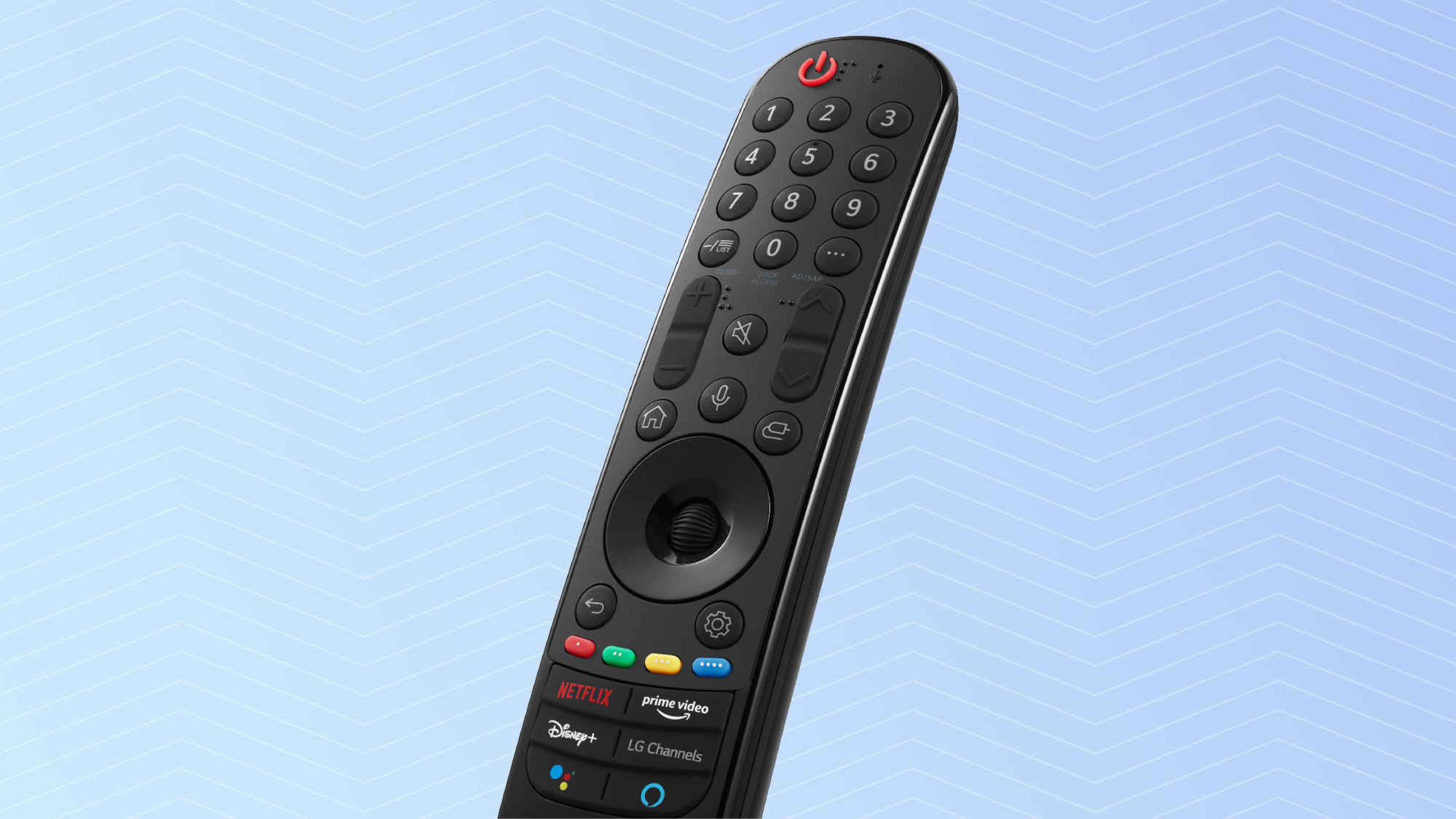
Another interaction option is voice control: Hold down the remote’s centrally located microphone button and you can speak your commands to the TV. The first time you do this, you’re also given the opportunity to turn on Hands-free Voice Control, which doesn’t require the remote; just say “Hi LG” and what you want to do, and the set will take care of it. Both versions of the voice control worked well.
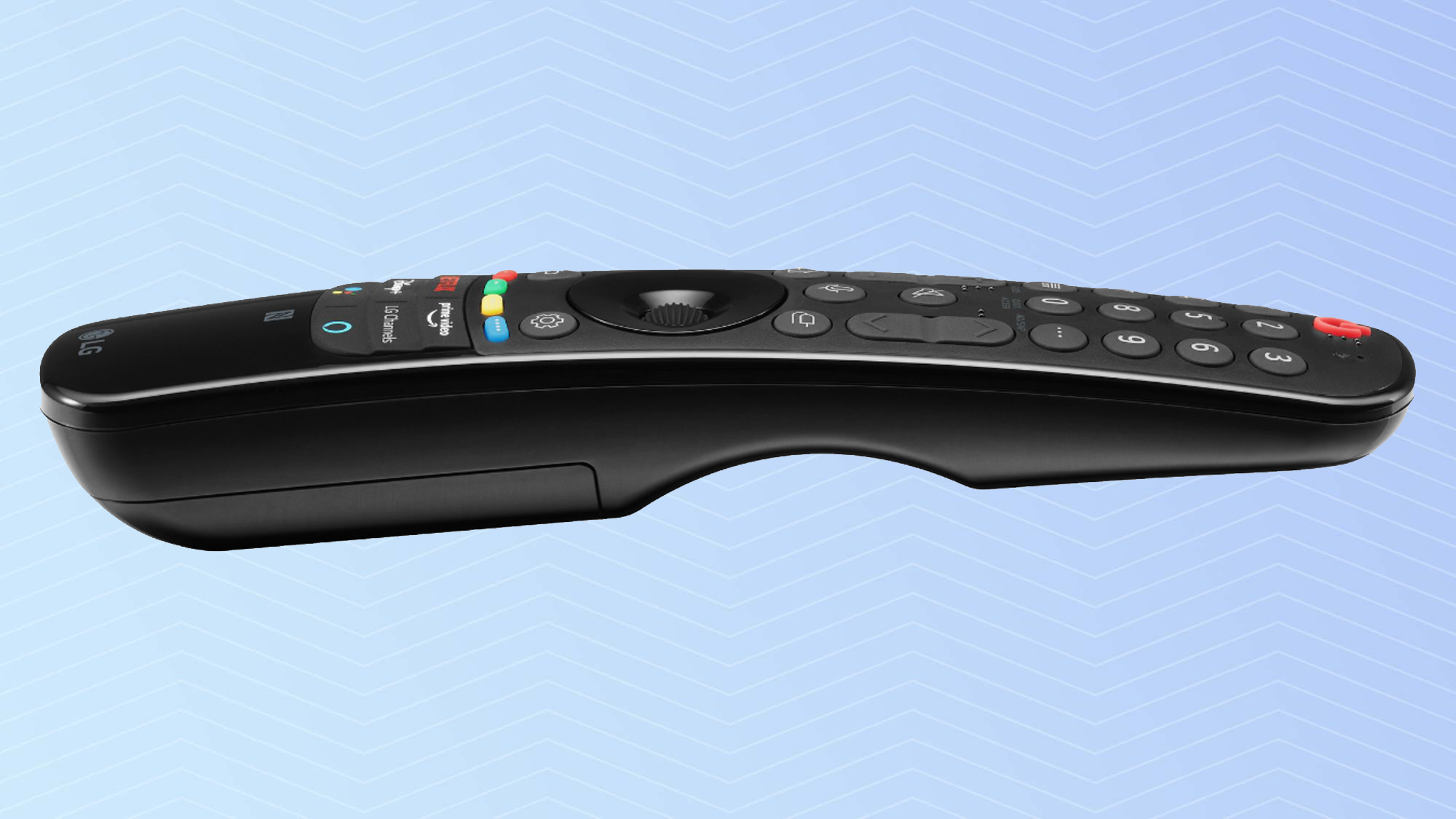
Otherwise, the remote is now slightly more rectangular, fitting more naturally into the hand, though its curvy underside and decent weighting remain; overall, it’s a lot more comfortable to use now. Also a plus are the cleaner controls, with more rounded buttons (the old version used a lot more ovals), soft-touch rocker switches for channel and volume, and other space-saving moves that allow for additional shortcut keys at the bottom (for Netflix, Amazon Prime Video, Disney+, LG Channels, Hey Google, and Amazon Alexa).
LG QNED MiniLED 99 Series 8K TV review: Verdict
If you’ve staked your claim on the bleeding edge of technology, we’re finally at the point where the concept of an 8K TV makes sense. Though pricey, they’re no longer second-mortgage expensive, and there are enough models out there that you can choose the one that most aligns with your preferences and potential brand loyalty.
From that standpoint, the LG QNED MiniLED 99 Series 8K TV is a perfectly tenable choice. It marshals a satisfyingly high level of brightness and color accuracy against its competitors, wields a capable audio system, and throws in a sparkling array of smart technologies, a good operating system, and an improved remote control. Though it’s sometimes slow to use, even that is tolerable. And, as a larger set, it lets you see—in a way you can’t with smaller sets, such as the 65-inch TCL 6-Series 8K (65R648)—all that 8K has to offer.
The sticking point remains 8K itself. It’s still a phantom format, with no major movies or TV series taking advantage of it in any real way. To get the most out of what little content that does exist, you really do need to get a large, expensive model, and have a lot of space and patience to devote to it. And for watching anything else, you have to rely on upscaling, which is an iffy prospect at best, even on a set with an otherwise good picture.
For everything the LG QNED MiniLED 99 Series 8K TV offers, it’s still a tough sell when the prices are this high and 4K and even 1080p are still so prevalent. The fact remains: If you buy this TV—or any other 8K TV—today, you’re buying it primarily for what it will deliver tomorrow.
Matthew Murray is the head of testing for Future, coordinating and conducting product testing at Tom’s Guide and other Future publications. He has previously covered technology and performance arts for multiple publications, edited numerous books, and worked as a theatre critic for more than 16 years.
